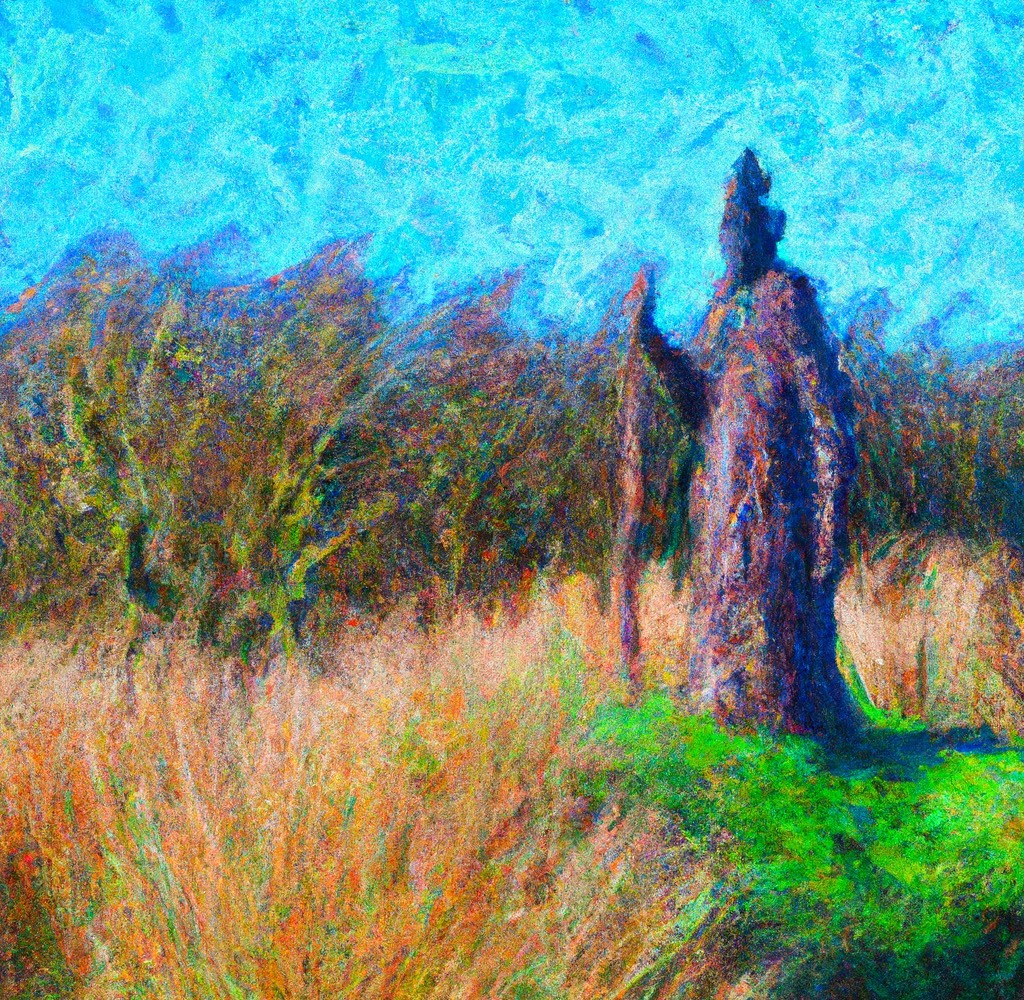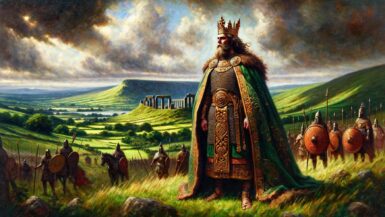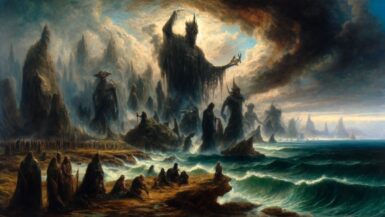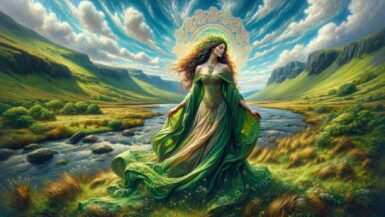The Mythological Cycle, one of the four major cycles of Irish mythology, is a fascinating exploration into the origins of Ireland and its people. It traces the complex and intricate history of the various supernatural beings, gods, and heroes that shaped the island’s culture and folklore. At the heart of this cycle lies the story of the Tuatha Dé Danann, a race of divine beings who were the precursors to the modern Irish people. This article will delve into the rich history of the Mythological Cycle, focusing on the Tuatha Dé Danann and their influence on the origins of Ireland.
The Mythological Cycle: An Overview
Four Cycles of Irish Mythology
Irish mythology is traditionally divided into four major cycles: the Mythological Cycle, the Ulster Cycle, the Fenian Cycle, and the Historical Cycle. Each of these cycles is a collection of tales, myths, and legends that explore different aspects of ancient Irish history, culture, and society.
The Mythological Cycle’s Role
The Mythological Cycle specifically deals with the origins of Ireland and its people, focusing on the divine and supernatural beings who inhabited the land before the arrival of human settlers. This cycle provides a rich tapestry of gods, heroes, and magical creatures, whose stories have shaped the core of Irish folklore and mythology.
The Tuatha Dé Danann: Divine Beings of Ireland
Origin and Name
The Tuatha Dé Danann, whose name translates to “the people of the goddess Danu,” were a race of divine beings in Irish mythology. They were descendants of the goddess Danu, a primordial figure associated with fertility, wisdom, and the land. The Tuatha Dé Danann were said to possess extraordinary powers, including the ability to control the weather, shape-shift, and perform incredible feats of magic.
Arrival in Ireland
According to the Mythological Cycle, the Tuatha Dé Danann arrived in Ireland after spending some time in the northern islands of the world, where they had learned their magical arts. Their arrival in Ireland is described in the Lebor Gabála Érenn, or the “Book of Invasions.” This ancient text recounts how the Tuatha Dé Danann came to Ireland on dark clouds, eventually settling on the island and driving out the previous inhabitants, the Fir Bolg.
The First Battle of Magh Tuireadh
The Tuatha Dé Danann’s arrival in Ireland led to the First Battle of Magh Tuireadh, a legendary conflict between the Tuatha Dé Danann and the Fir Bolg. Although the Fir Bolg fought bravely, they were eventually defeated by the superior magical powers of the Tuatha Dé Danann. The surviving Fir Bolg were allowed to retreat to the western parts of the island, while the Tuatha Dé Danann established their rule over the rest of Ireland.
The Gods and Goddesses of the Tuatha Dé Danann
The Dagda
The Dagda, also known as “The Good God,” was the chief of the Tuatha Dé Danann and a prominent figure in Irish mythology. He was a god of fertility, agriculture, and wisdom, and was known for his extraordinary powers. Among his many magical possessions were a cauldron of abundance, a club capable of killing or resurrecting, and a harp that could control the seasons.
Brigid
Brigid, also known as “The Exalted One,” was a goddess of healing, poetry, and smithcraft. She was the daughter of the Dagda and was revered for her wisdom and creativeity. Brigid was often associated with sacred wells and springs, which were believed to have healing properties. Her influence was so significant that she was later incorporated into Christian tradition as Saint Brigid of Kildare.
Lugh
Lugh, also known as “Lugh of the Long Arm,” was a god of many talents, including arts, crafts, and warfare. He was the son of Cian, a member of the Tuatha Dé Danann, and Ethniu, a daughter of the Formorian leader Balor. Lugh played a crucial role in the Second Battle of Magh Tuireadh, where he led the Tuatha Dé Danann to victory over the oppressive Formorians. His expertise in various skills earned him the title “Samildánach,” or “Master of All Arts.”
The Morrigan
The Morrigan, also known as “The Phantom Queen,” was a goddess of war, fate, and death. Often depicted as a trio of sisters – Badb, Macha, and Nemain – the Morrigan held significant influence over the outcome of battles and the fate of warriors. She was also associated with shape-shifting, prophecy, and sovereignty.
The Second Battle of Magh Tuireadh and the Formorians
The Formorians
The Formorians were a race of monstrous, supernatural beings who ruled over Ireland before the arrival of the Tuatha Dé Danann. They were often portrayed as enemies of the Irish gods and were associated with chaos, darkness, and destruction.
The Second Battle of Magh Tuireadh
The Second Battle of Magh Tuireadh, a legendary conflict between the Tuatha Dé Danann and the Formorians, is a pivotal event in the Mythological Cycle. The battle was fought to end the oppressive rule of the Formorians, who demanded heavy tribute from the Tuatha Dé Danann. Lugh, with his exceptional skills and knowledge, emerged as the leader of the Tuatha Dé Danann and played a crucial role in their victory over the Formorians.
The Death of Balor
One of the key moments in the Second Battle of Magh Tuireadh was the confrontation between Lugh and his grandfather, the Formorian leader Balor. Balor possessed a powerful, destructive eye that could kill anyone who looked upon it. Lugh, using his cunning and skill, managed to slay Balor by driving a sling-stone through his evil eye, ultimately turning its deadly power against the Formorian army and securing victory for the Tuatha Dé Danann.
The Arrival of the Milesians and the Decline of the Tuatha Dé Danann
The Milesians
The Milesians, who were the ancestors of the modern Irish people, arrived in Ireland several generations after the Tuatha Dé Danann had established their rule. Their arrival marked the beginning of a new era in Irish history, as they brought with them a more human and less magical approach to life.
The Battle of Tailtiu
The Tuatha Dé Danann and the Milesians eventually engaged in a series of battles, culminating in the Battle of Tailtiu. The Milesians, led by their chieftain Amergin, were ultimately victorious, and the Tuatha Dé Danann were forced to retreat.
The Otherworld and the Sidhe
Following their defeat, the Tuatha Dé Danann retreated into the Otherworld, a mystical realm that exists parallel to the human world. They became the “Aos Sí” or “Sidhe,” supernatural beings who continued to influence the lives of the Irish people from their hidden realm.
The Legacy of the Tuatha Dé Danann in Irish Culture and Folklore
The Enduring Influence of the Gods
Although the Tuatha Dé Danann retreated into the Otherworld, their influence on Irish culture and folklore persisted. Many of the gods and goddesses, such as the Dagda, Brigid, Lugh, and the Morrigan, continued to be revered and celebrated in various ways, with their stories passed down through generations.
Festivals and Celebrations
Several ancient Irish festivals and celebrations can be traced back to the stories and deities of the Tuatha Dé Danann. For example, Lughnasadh, held on August 1st, is a harvest festival that honors Lugh, while Imbolc, celebrated on February 1st, is associated with Brigid and the arrival of spring.
The Aos Sí and Irish Folklore
The Aos Sí, or the Sidhe, are central figures in Irish folklore. They are often depicted as powerful, mysterious beings who interact with humans, either helping or hindering them in various ways. Tales of the Aos Sí include stories of enchanted lands, hidden treasures, and magical encounters, reflecting the enduring influence of the Tuatha Dé Danann on the Irish imagination.
Modern Interpretations and Adaptations
The stories of the Tuatha Dé Danann have inspired many modern interpretations and adaptations, both in Ireland and around the world. They have been the subject of novels, films, and television series, as well as the inspiration for music and visual art. Additionally, the Tuatha Dé Danann continue to be a source of fascination and study for scholars of mythology, history, and cultural anthropology.
Conclusion
The Mythological Cycle and the story of the Tuatha Dé Danann provide a fascinating insight into the origins of Ireland and its people. The divine beings, gods, and heroes of this cycle have had a lasting impact on Irish culture and folklore, with their stories continuing to inspire and captivate the imaginations of people around the world. By delving into the rich history of the Mythological Cycle, we gain a deeper understanding of the ancient beliefs and cultural influences that have shaped the unique identity of Ireland and its people.






Thank you for creating such a helpful website! I have been trying to find a textual source for the deal that Amergin made with the Tuatha De Danann regarding “the bottom half of the island” in which the Tuatha De went into the Sidhe. I know that it is not mentioned in the Book of Invasions. Do you have any reference for that?